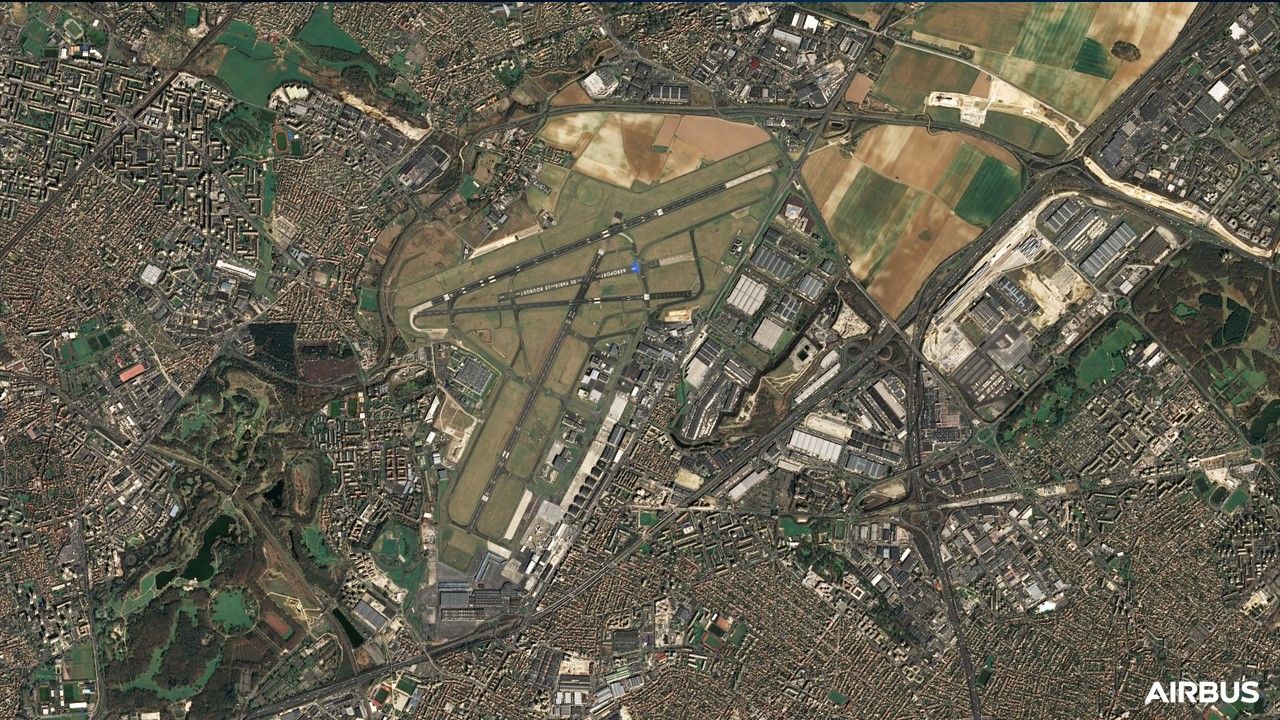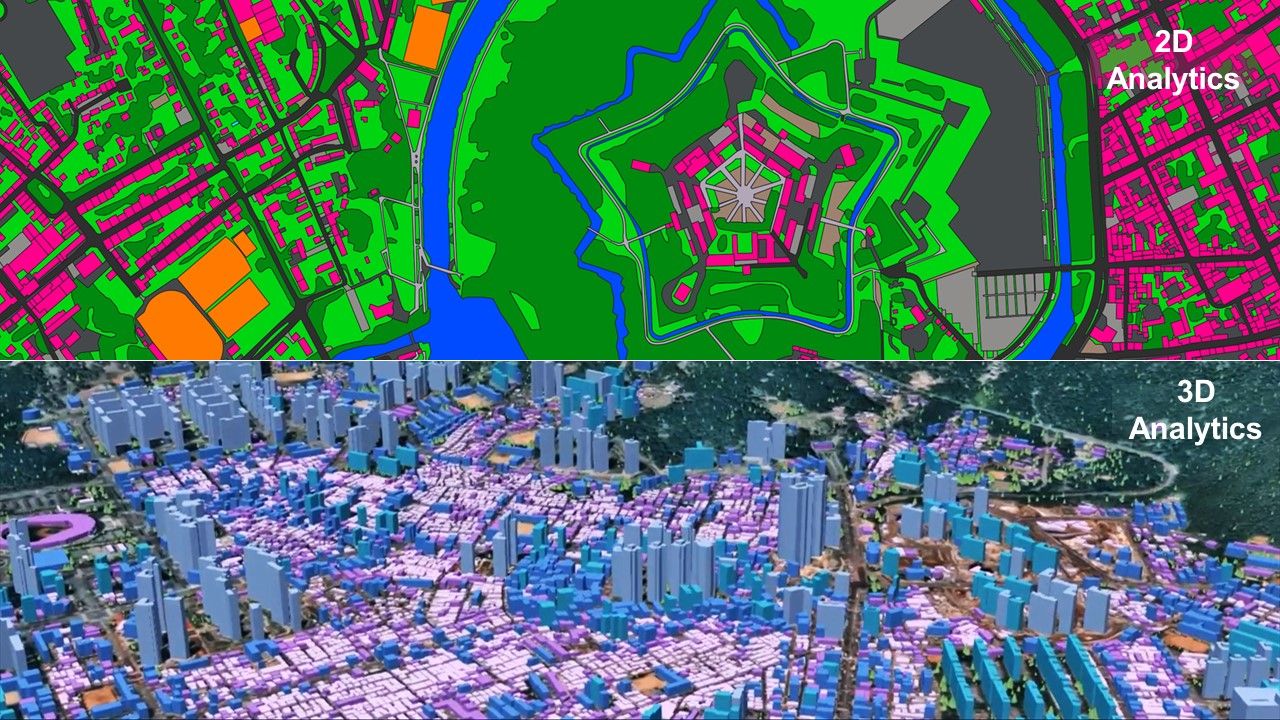
Home
Our Expert's Answers
Revolutionizing mapping
Revolutionizing Mapping: How Airbus Satellite Constellation Complements or Replaces Aerial Surveys

From HD15 to 1,5m resolution satellite imagery
Airbus satellite Constellation: Redefining mapping capabilities
Aerial and satellite imagery provide essential data for mapping, each offering distinct advantages. With its portfolio of optical sensors—SPOT, Pléiades, Pléiades Neo, and the cutting-edge Pléiades Neo HD15—Airbus delivers satellite solutions that seamlessly complement aerial surveys and, in many cases, provide a highly capable alternative.

Pléiades Neo for urban and mapping industries
1:00
Meeting key satellite mapping challenges
- Resolution & scale: From large-area land use mapping at 1:30,000 scale to high-detail infrastructure monitoring at 1:2,500 scale
- Data consistency: Uniform lighting, viewing angles, and radiometric calibration ensure reliable analysis over time
- Speed & efficiency: Fresh, up-to-date imagery is crucial for disaster response, urban expansion, and environmental monitoring
- Multispectral & stereo imaging: Advanced capabilities enable vegetation analysis, 3D terrain modelling, and geological mapping
- Accessibility: Satellites provide unrestricted access to remote, politically sensitive, or logistically challenging areas

The Airbus satellite constellation: Precision meets scale
Our satellite fleet provides a tailored approach for diverse mapping needs:

SPOT satellites: Huge areas covered in record time
Resolution: 1.5m | Swath width: 60 km | Revisit rate: Frequent
- Ideal for topographic mapping (1:30,000–1:7,500)
- Supports agriculture and environmental monitoring
- Cost-effective regional coverage

Pléiades: High-resolution imagery
Resolution: 50 cm | Swath width: 20 km | Revisit rate: Daily
- Optimal for urban planning and infrastructure monitoring (1:5,000 scale)
- Supports critical asset management and land use mapping
Complements aerial data with high-precision insights

Pléiades Neo: Unrivalled precision and quality in satellite imagery
Resolution: 30 cm | Swath width: 14 km | Revisit rate: Daily, anywhere
- Time-sensitive monitoring for civil engineering and industrial sites (1:2,000 scale)
- Ideal for detecting environmental changes with high accuracy
- Multiple daily revisits enhance situational awareness

Pléiades Neo HD15: Unparalleled detail matching aerial surveys
Enhanced resolution: 15 cm (for ortho imagery)
- Advanced Airbus processing delivers near-aerial resolution
- A powerful alternative to aerial surveys for transport and infrastructure mapping
- Enables ultra-detailed feature extraction

Overcoming traditional constraints with satellite solutions
- Weather independence: Weather conditions often hinder consistent data acquisition in remote sensing. Unlike traditional aerial surveys that are delayed by cloud cover and atmospheric conditions, satellites leverage flexible tasking and frequent revisit capabilities to optimise image capture. One Tasking, for example, provides Pléiades Neo with an adaptive tasking system that integrates real-time meteorological data to improve acquisition success rates and deliver reliable, high-quality imagery with minimal disruption.
- Regulatory freedom: Traditional aerial surveys often face operational constraints due to national airspace regulations, restricted areas, and logistical constraints. Satellites bypass these limitations, offering unrestricted, scalable, and legally compliant data acquisition for any location worldwide.

Integrated imaging & AI-driven insights
- Multispectral analysis – Supporting vegetation health monitoring, precision agriculture, and water resource management.
- Stereo & 3D modeling – Generating high-accuracy DSMs and DTMs for infrastructure planning and disaster assessment.
- Automated change detection – AI-powered land classification and feature extraction for rapid insights.
- Scalable cloud processing – Seamless integration with OneAtlas for large-scale data analysis.
Satellites vs aerial surveys: A changing balance
- Precision vs coverage – Satellites now offer near-aerial resolution with HD15, making them increasingly competitive for highly-detailed applications while maintaining global scalability.
- Speed & flexibility – Pléiades Neo & HD15 enable near-real-time updates, overcoming the logistical constraints of aerial campaigns.
- Cost & efficiency – Satellites offer repeatable, cost-effective large-area mapping, whereas aerial surveys remain suited for highly detailed local projects.
A seamless satellite solution for modern mapping
With the SPOT, Pléiades, and Pléiades Neo constellations—enhanced by HD15—Airbus delivers the perfect balance of scale, precision, and revisit frequency. Whether used as a complement to aerial surveys or as a standalone solution, Airbus satellites are redefining the future of mapping.
As capabilities evolve, are we witnessing a transition from a two-pronged approach to a fully satellite-driven mapping future with the upcoming Pléiades Neo Next?
Did you find what you were looking for?
Speaking with the Airbus team is the best way to get started.